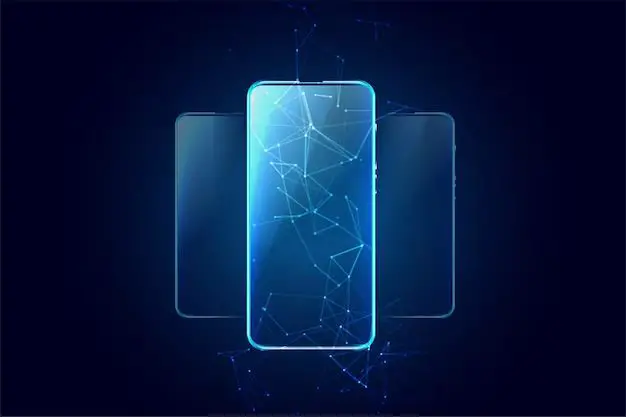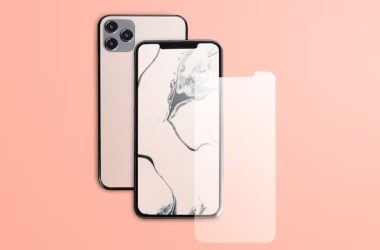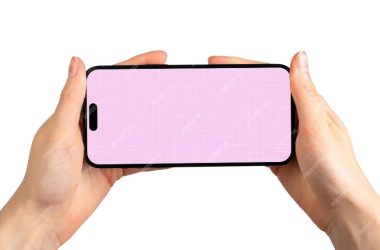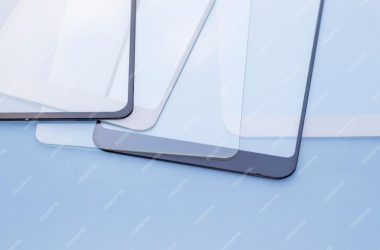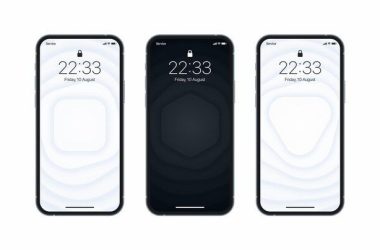Screen protectors are transparent sheets or films that are applied to the front display surface of electronic devices like smartphones, tablets, and smartwatches. They serve as an extra protective layer to guard the device’s screen against scratches, cracks, oil, dirt, and other damage. Users install screen protectors to help preserve the screen’s condition and maintain visibility.
The main benefits of using a screen protector are increased scratch resistance, impact absorption from drops, and reduced fingerprints/smudges. Some screen protectors can also provide privacy filtering or anti-glare properties. However, there are some downsides – screen protectors can trap dust particles causing air bubbles, reduce screen sensitivity/clarity, add thickness to the device, and be challenging to properly install without getting dust under them. There’s an ongoing debate about whether the trade-offs are worth it for modern smartphone screens with protective glass like Gorilla Glass or Victus Glass.
Using a Case Instead
Many people wonder if they still need a screen protector if they use a protective case for their phone. Phone cases can provide some level of screen protection by creating a barrier around the device. The raised edges around the screen help prevent it from coming into direct contact with surfaces if the phone is placed face down. Cases also cushion your phone against drops and bumps. Using just a protective case has pros and cons compared to also using a screen protector.
The main pro of relying solely on a case for protection is avoiding the hassle and expense of buying, applying and replacing screen protectors over time. Cases are also better at protecting the phone from drop damage compared to thin plastic or glass screen covers. However, cases do not fully prevent the screen from getting scratched or cracked if hit in the right spot. Screen protectors provide an extra layer of defense right on the display surface. They help guard against scratches, scrapes and cracks from keys or other objects that might still occur even with a case on. Though screen protectors can crack or peel, they are meant to take the damage instead of your actual phone screen.
According to one source, “So as a general rule, a case is more durable than a screen protector, and will better protect your phone from drop damage. Period.” (https://omoton.com/blogs/news/screen-protectors-vs-cases). However, for maximum screen protection many users prefer using both a case and a screen protector.
Tempered Glass Screen Protectors
Tempered glass screen protectors are made from chemically strengthened glass that has been heat treated to increase its strength and durability. The tempering process causes the glass to be 3-5 times stronger than regular glass [1]. These screen protectors are usually around 0.3mm thick.
Compared to plastic screen protectors, tempered glass has some key advantages:
- More scratch resistant – The hardened glass is very difficult to scratch
- Better screen clarity – Tempered glass is optically clear and doesn’t degrade image quality
- More shatter resistant – The glass can take impacts without cracking or shattering
- Feels more premium – The glass has a smooth surface and solid feel
However, tempered glass does have some downsides compared to plastic:
- More expensive – Tempered glass protectors cost 2-3x more than plastic
- Less flexible – The rigid glass doesn’t conform perfectly to curved screens
- Reflective – May cause occasional glare in bright light
Overall, tempered glass provides superior scratch protection and durability compared to plastic, but comes at a higher price point.
Plastic Screen Protectors
There are several types of plastic screen protectors to consider as an alternative to glass. The most common are PET film protectors and TPU protectors.
PET (polyethylene terephthalate) film protectors are thin, flexible, and provide basic scratch protection. They are affordable and easy to apply without bubbles. However, they don’t provide much impact protection and can scratch more easily over time [1].
TPU (thermoplastic polyurethane) plastic protectors are more durable and offer better protection. TPU is flexible but stronger than regular plastic. These protectors resist scratches well and provide decent impact absorption. On the downside, they can be thicker than glass and attract more fingerprints [2].
Compared to glass, plastic is generally more affordable and easier to install bubble-free. However, plastic lacks the clarity, feel, and protection of glass. Plastic protectors may suit users looking for basic protection on a budget.
Liquid Screen Protectors
Liquid screen protectors are an alternative to traditional plastic or glass screen protectors. They are applied as a liquid solution directly onto a phone or tablet’s screen and cure to form a thin, transparent layer. The liquid contains nano-ceramic particles or silica that create a smooth protective barrier.
Compared to glass and plastic protectors, liquid screen protectors have some advantages and disadvantages:
Pros:
- Provide nearly invisible protection that maintains the device’s original touch sensitivity and clarity (Source: https://www.gogonano.com/liquid-screen-protector-vs-tempered-glass/?lang=en)
- Smooth, self-healing formula fills in minor scratches (Source: https://spacecoastdaily.com/2020/11/liquid-screen-protector-vs-tempered-glass-which-one-is-better/)
- Thin application avoids bulk and rainbow effects
- Bubble and halo free installation
Cons:
- May not protect as well against drops or impacts compared to glass (Source: https://www.gogonano.com/liquid-screen-protector-vs-tempered-glass/?lang=en)
- Reapplication needed every 6-12 months as coating wears off
- Installation can be tricky and messy
Overall, liquid screen protectors provide decent scratch protection in a thin, clear package, but may not offer the most heavy duty impact defense. They can be a good option for those wanting subtle long-term protection without compromising device aesthetics.
Screen Protector Alternatives
There are a few alternatives to traditional screen protectors that can help protect your phone’s display. Some options include:
Device Sleeves
Using a sleeve or case that fully covers your phone when not in use can prevent scratches and cracks. Look for sleeves made of microfiber or soft fabrics. Some popular brands are Speck and i-Blason.
Screen Repair Kits
Repair kits allow you to fix minor scratches and chips yourself. They contain special polishing compounds and tools. Popular options are from brands like Novus and MagicFiber.
Screen Cleaning Solutions
Using a screen cleaner regularly can remove debris that causes scratches. Look for cleaners designed specifically for phone screens. Top brands include Whoosh and Monster.
Factors to Consider
There are several factors to consider when choosing a screen protector:
Durability – Tempered glass protectors tend to be the most durable and scratch-resistant. Plastic protectors offer decent protection but may scratch more easily. Liquid protectors provide minimal physical protection.
Cost – Tempered glass is generally the most expensive, with prices from $10-50. Plastic protectors are cheaper, usually between $5-20. Liquid applicators are the least expensive at around $10 or less.
Application Method – Tempered glass uses a simple peel and stick method. Plastic can be wet or dry applied. Liquids require carefully applying to the screen.
Clarity – Tempered glass is very clear and smooth. Plastic is less clear. Liquids can produce a somewhat tacky feel.
Scratch Protection – Tempered glass offers the best scratch protection. Plastics resist scratches fairly well. Liquids provide minimal scratch protection.
Impact Absorption – Tempered glass and plastics can both cushion impacts somewhat. Liquids do not absorb impact.
The most important factors for most people are durability, scratch protection, and clarity. Tempered glass excels in these areas. It provides a very clear, smooth surface that resists scratches and impacts well.
Recommendations
Here are some top recommended screen protector options in each category:
Tempered Glass
amFilm Tempered Glass Screen Protector – This affordable tempered glass protector scores very high on the Mohs hardness scale and provides excellent scratch protection according to PCMag. It’s easy to install and rated highly by users.
Zagg InvisibleShield Glass Elite+ – Zagg’s premium tempered glass protects against scratches and drops, and includes features like antimicrobial product protection and enhanced chip resistance according to Asurion. It’s a great choice for maximum protection.
Plastic Film
Spigen NeoFlex Screen Protector – This thin plastic protector offers scratch protection while maintaining the natural feel of the phone screen. The wet install method ensures an easy, bubble-free application.
Tech Armor Ballistic Glass – For plastic screen protection with improved shatter resistance, this protector features a multi-layer design with a polymer disperse system. It gets top reviews for screen clarity and touch sensitivity.
Liquid
Liquid Guard Liquid Screen Protector – The top-rated liquid screen protector formula. It chemically bonds to the phone screen for smooth feel and self-healing scratch resistance.
Phantom Glass Liquid – Offers military-grade protection in a fast-drying liquid formula. Provides a warranty against scratches.
Installation Tips
Properly installing a screen protector takes some care and patience, but following these tips can help ensure a smooth, bubble-free application:
First, thoroughly clean your device’s screen. Use a lint-free cloth like a microfiber cloth dampened with isopropyl alcohol to gently wipe away any dust, oils or smudges (source). Allow your screen to fully dry before proceeding.
Second, find a dust-free area to install the screen protector, like a clean tabletop. Avoid applying it in places where dust particles may settle onto the adhesive side.
Peel off the adhesive backing partially, align the screen protector carefully, then allow the adhesive to make contact with the screen little by little as you remove the backing. Doing this slowly prevents air bubbles. If any appear, use the provided squeegee card and gently press from the center outward to push bubbles to the edges (source).
Finally, remove any alignment stickers and allow the adhesive to fully cure over 24 hours. Your screen protector should now be securely applied!
Conclusion
In summary, there are several viable alternatives to traditional screen protectors that provide various benefits and tradeoffs:
– Phone cases made of impact-resistant materials like silicone can provide decent scratch protection while adding grip and shock absorption. However, they don’t fully prevent scratches and may add bulk.
– Tempered glass screen protectors offer the most scratch protection and optimal touchscreen sensitivity. But they can be prone to cracking and may not fit some curved displays.
– Plastic film screen protectors are inexpensive and thin while still protecting against scratches. However, they are less durable and prone to bubbling.
– Liquid screen coatings provide a simple do-it-yourself approach to protect against minor scratches. Yet they wear off over time and don’t prevent deeper scratches.
Overall, tempered glass screen protectors appear to provide the best combination of full scratch protection and durability. For those wanting a minimalist option, plastic protectors or liquid coatings can work as temporary scratch guards. And cases with elevated edges add useful drop protection that complements any built-in screen shielding.
The ideal solution depends on your priorities and budget. But some form of extra protection is recommended to extend the lifespan of your device’s display and maintain optimal viewing conditions.
